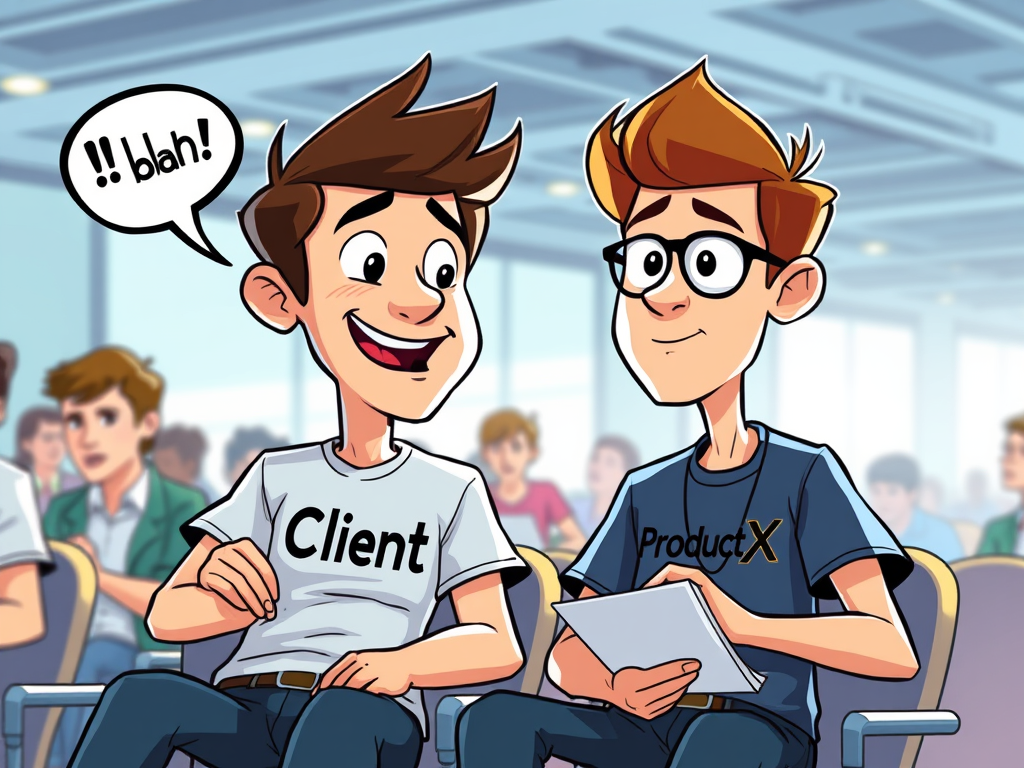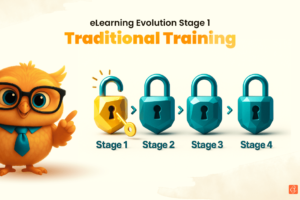
The Pitfalls of Relying on Client Feedback in LMS Development
Here is a funny story – tell me if you have heard it before.
Two Learning Systems vendors, an LXP and an LMS, walk into a conference.
Each of them has a lot of fans, and each is trying to land new clients.
They show their respective systems and discuss the benefits and what makes them different.
The potential client sits back in awe – this company is just like me.
They get me.
I get them.
Too bad somebody beat you to the punch.
Their other clients
Some are big, okay, and some aren’t; thus, those two systems aren’t so different.
Pretty funny, huh?
The Above Scenario
I would love to tell you that it is a very unfunny joke that doesn’t exist.
Sadly, though, it does – way too often.
The Numbers
I’m going to get right to the numbers.
Numbers speak louder than words, which is why I am writing this post.
Ha, I made a funny – move over Peanuts.
A few unpersonal favorites I’ve heard from vendors on the percentage of their system roadmap being driven by their client base
- 75%
- 90%
- 65%
- 50%
- 35%
- 55%
- 82% (I always wanted to know how they could figure out the extra two percentage points)
Who are the clients providing that are driving the product development and roadmap?
Please be aware that not every vendor uses or identifies with the list below, but there are vendors who do.
- Clients who use the system the most
- Large Enterprise clients
- Clients with over 25,000 users
- A few big-name clients (I can say that one of them – has this power in not one but a few systems -and it isn’t who you think – although I am aware of those you do believe. Oh, and that power? Each vendor has gone down a rabbit hole due to that client)
- Select 50 clients – Well-known, F500.
- Clients who use the system the most
- Large Enterprise clients
- Clients with over 25,000 users
- A few big-name clients (I can say that one of them – has this power in not one but a few systems -and it isn’t who you think. Oh, and that power? Each vendor has gone down a rabbit hole due to that client)
- Select 50 clients – Well-known, F500.
- Focus Groups—Plenty of data backs up their effectiveness, specifically their lack thereof.
- Eilict feedback from everyone: There is information out there showing why this is a bad idea, too.
Why in earth’s name would you want a vendor to rely on so and so, big names, or client feedback of more than 10% (percent) on the development of the system?
Most vendors in this industry have a product management team or, at minimum, a product development team.
Each group always has one person at the top of the food chain.
Plenty of vendors have someone called CPO. R2D2 went on strike.
CPO – Chief Product Officer.
These people are not being paid to offset their brains and expertise with only client feedback.
If they are, use AI.
It is a lot cheaper and probably knows how to follow steps to create at least a basic system—ditto for that product management team.
What is the percentage?
No more than ten percent. That is it.
Ten percent.
Ideally, it should be about two to three percent, but if a vendor doesn’t exceed ten percent – not just from the best or widely used clients, then it is acceptable.
Numbers Game 2.0
Vendor A has 335 clients.
Everyone’s feedback is essential. It is something the vendor pushes in their pitch.
This should be 100%
The vendor, though, really listens to 40
Reality – 8.37%
That’s it.
8.37% of their clients are the power brokers for the system you buy and will use.
Would you still want to purchase the system if you knew that amount?
75% to 90%
Yuck.
My mouth dropped when I heard those numbers.
The assumption here, and I can only surmise this, is that those folks—the clients—know more about the current trends, where the industry is heading, and everything in a system.
Vendors say that the feedback—use cases—helps them, and the vendor develops a system to meet those use cases better.
Because the folks contacting them use the system, and therefore blah blah blah.
Who contacts a vendor?
Let me rephrase this.
When you contact a vendor, is it for a plus reason or a problem?
My gut says the latter.
How does a vendor get that feedback that drives product development?
The 8.37%?
Studies have shown higher levels of honesty when someone can respond anonymously.
90%
Why are you in business?
If some PE firm gave the vendor money, are they aware that you are giving others the driver’s seat and that you, as the vendor, are just along for the ride?
Being Clear
Yes, you have read this post.
Yes, you are aware that as an analyst, even a fellow person like yourselves – back in the day of buying a system, would find this information disturbing at best.
It is disingenuous at its worst.
The idea that a tiny percentile of X clients leads the charge is cringeworthy.
Bottom Line
8.37%
You can thank them
Assuming the vendor will share that information with you
Then, send those clients a gift, such as a bouquet.
Then request a refund and go to an entity whose system achieves what you want,
At a fraction of the cost
My dear friend,
AI:
Our Learning Management System (LMS) is designed to be a learner-driven, easy-to-use platform that supports upskilling and continuous professional development. It combines personalized learning paths, AI-driven recommendations, and an intuitive interface to enhance engagement and skill acquisition.
Key Features & Approach
- User-Centric Design: Simple, intuitive interface requiring minimal onboarding.
- Adaptive Learning Paths: AI-driven recommendations tailor courses based on user progress and career goals.
- Upskilling & Reskilling Focus: Extensive library of microlearning modules, certifications, and industry-relevant courses.
- Gamification & Engagement Tools: Interactive elements like quizzes, leaderboards, and social learning for motivation.
- Seamless Integration: Works with existing enterprise systems (HR, CRM) and third-party learning content.
- Analytics & Performance Tracking: Real-time insights into learner progress, skill gaps, and engagement trends.
E-Learning 24/7
Source link



